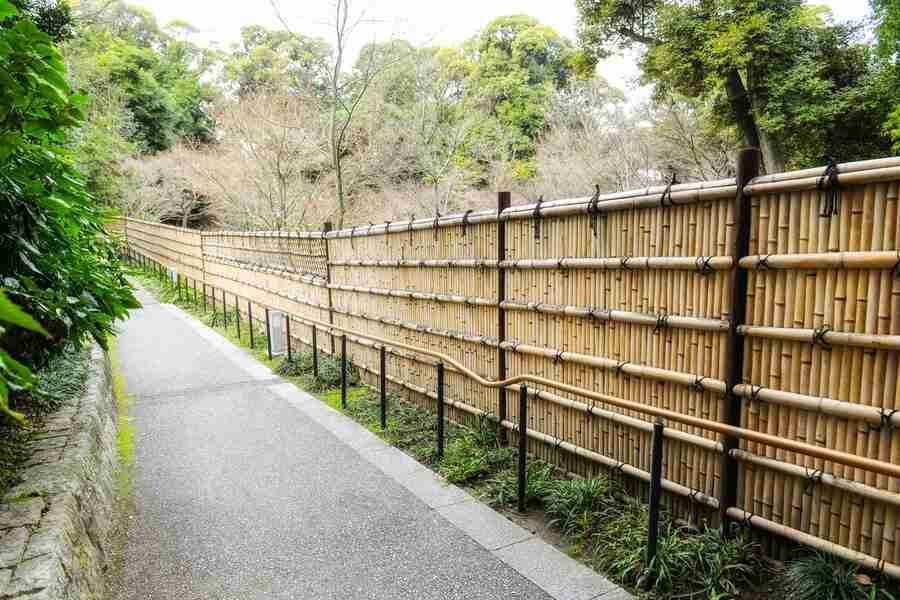
In the realm of fences, where function meets aesthetics, few materials possess the enduring charm and timeless allure of wood. From rustic country homesteads to modern urban dwellings, wood fences have been a staple in property demarcation and landscape enhancement for centuries. The warmth, versatility, and natural beauty of wood lend an unparalleled character to any outdoor space, making it a preferred choice for homeowners and designers alike.
In this comprehensive guide, we delve into the world of wood fences, exploring their rich history, diverse styles, practical considerations, and maintenance tips. Whether you’re contemplating installing a new fence or seeking to refurbish an existing one, join us on a journey through the enchanting realm of wooden enclosures, where tradition meets innovation and functionality blends seamlessly with aesthetics.
Wood Fences: A Timeless Choice
Wood fences stand as an emblem of timeless elegance and practicality, embodying a classic aesthetic that has endured for generations. Unlike other materials that may come and go with trends, wood retains a sense of authenticity and warmth that resonates with homeowners and designers alike. Its natural beauty, ranging from the rich hues of cedar to the earthy tones of redwood, adds a distinctive charm to any outdoor space. Moreover, wood fences offer versatility, blending seamlessly with various architectural styles and landscaping preferences.
Beyond its aesthetic appeal, wood is also celebrated for its durability and strength. When properly maintained, wood fences can withstand the test of time, providing reliable boundary demarcation, privacy, and security for residential and commercial properties alike. Whether adorning a suburban backyard or framing the perimeter of a countryside estate, wood fences remain a steadfast choice for those seeking both functionality and beauty in their outdoor environments.
Exploring Rich Historical Roots
The history of wood fences is deeply intertwined with human civilization, dating back to ancient times when early settlers utilized wooden enclosures for protection, livestock containment, and agricultural purposes. Archaeological findings reveal evidence of wooden fences dating back thousands of years, highlighting the enduring significance of this age-old construction technique.
Throughout history, wood has been readily available and easily worked, making it a natural choice for fence construction across diverse cultures and geographical regions. From the iconic white picket fences of colonial America to the intricately carved gates of Japanese gardens, wood fences have played a pivotal role in shaping landscapes and defining boundaries throughout the ages.
Versatile Styles and Designs
One of the most compelling aspects of wood fences is their versatility in terms of styles and designs. Whether you prefer a classic picket fence, a rustic split rail fence, or a contemporary horizontal slat design, wood can be crafted to suit a wide range of aesthetic preferences and architectural styles. Additionally, wood offers flexibility in terms of customization, allowing homeowners to tailor their fences to specific height, length, and embellishment requirements.
Furthermore, wood fences can be stained or painted in various colors to complement the surrounding landscape or match the exterior of the property. This versatility enables homeowners to achieve a cohesive and harmonious look that enhances the overall curb appeal of their homes.
Factors Influencing Material Selection
When considering the installation of a wood fence, several factors come into play that may influence the choice of material. One of the primary considerations is the type of wood used, as different species offer varying degrees of durability, resistance to decay, and aesthetic appeal.
For instance, cedar and redwood are prized for their natural resistance to rot and insect infestation, making them ideal choices for outdoor applications. Pressure-treated pine, on the other hand, is a more budget-friendly option that offers enhanced durability through chemical treatment.
Additionally, the climate and environmental conditions of the installation site should be taken into account, as certain woods may fare better in humid or rainy climates compared to dry or arid regions. Similarly, the intended purpose of the fence, whether it’s for privacy, security, or purely decorative purposes, will also influence material selection.
Installation Considerations
Proper installation of a wood fence is crucial to ensure its longevity and effectiveness in serving its intended purpose. Before beginning the installation process, consider the following factors:
- Property Assessment: Conduct a thorough assessment of the installation site, including soil conditions, property lines, and any potential obstacles or obstructions. This ensures accurate placement and alignment of the fence.
- Post Hole Depth and Diameter: Dig post holes at appropriate depths and diameters to provide adequate stability and support for the fence structure. Deeper holes are recommended for taller or heavier fences to prevent leaning or shifting over time.
- Support Structures: Install horizontal rails securely to provide structural support and stability for the fence panels or boards. Properly spaced and aligned rails ensure uniformity and prevent sagging or warping.
- Material Quality and Treatment: Use high-quality wood materials and consider pressure-treated lumber for enhanced durability and resistance to decay, insects, and weathering. Choosing the right materials ensures a long-lasting and reliable fence installation.
Enhancing Outdoor Aesthetics
Wood fences not only serve practical purposes but also contribute significantly to the overall aesthetics of outdoor spaces. Their natural beauty and warmth add a touch of rustic charm and timeless elegance to any landscape, enhancing the visual appeal of residential properties, parks, and commercial developments alike.
Moreover, wood fences can be integrated seamlessly into existing landscaping features, such as gardens, pathways, and outdoor living areas, creating a cohesive and inviting environment. Whether serving as a backdrop for lush foliage or framing panoramic views, wood fences have the unique ability to elevate the aesthetic quality of outdoor spaces while blending harmoniously with their surroundings.
Maintenance Essentials for Longevity
While wood fences offer numerous benefits in terms of aesthetics and functionality, proper maintenance is essential to ensure their longevity and performance over time. Exposure to the elements, such as sunlight, moisture, and temperature fluctuations, can cause wood to warp, rot, or decay if left untreated.
To preserve the beauty and structural integrity of a wood fence, regular maintenance tasks, such as cleaning, sealing, and staining, are recommended. Cleaning the fence periodically with a mild detergent and water solution helps remove dirt, mold, and mildew, preventing discoloration and deterioration.
Environmental Sustainability
In an era of increasing environmental awareness and sustainability concerns, wood fences offer a compelling choice for eco-conscious consumers seeking environmentally friendly building materials. Unlike synthetic alternatives, which are often derived from fossil fuels and require significant energy inputs during production, wood is a renewable resource that can be harvested responsibly from sustainably managed forests.
Furthermore, wood fences have a lower carbon footprint compared to other materials, as they sequester carbon dioxide from the atmosphere throughout their lifespan. By choosing wood as a fencing material, consumers can contribute to carbon sequestration efforts and mitigate the environmental impacts associated with traditional building materials.
Innovative Trends in Wood Fencing
As technology and design trends evolve, so too do the possibilities for wood fencing. In recent years, innovative techniques and materials have emerged to enhance the performance, aesthetics, and sustainability of wood fences, providing homeowners with new options for their outdoor spaces.
One notable trend is the use of composite materials, which combine wood fibers with recycled plastics to create a durable and low-maintenance alternative to traditional wood fencing. Composite fences offer the look and feel of wood with added benefits such as resistance to rot, insects, and fading, making them an attractive option for those seeking longevity and ease of maintenance.
Budget-Friendly Options and Alternatives
When considering budget-friendly options and alternatives for fencing, homeowners have several strategies to explore that can help them achieve their desired look and functionality without breaking the bank.
- Alternative Wood Species: Opting for less expensive wood species, such as pressure-treated pine, can provide durability and aesthetics at a lower cost compared to premium woods like cedar or redwood.
- Prefabricated or DIY Kits: Prefabricated fence panels or do-it-yourself kits offer a cost-effective solution, often including pre-cut materials and assembly instructions that reduce labor costs.
- Collaboration with Contractors: Working closely with fencing contractors or suppliers can help homeowners identify cost-saving opportunities, such as bulk discounts, seasonal promotions, or alternative installation methods.
- Consideration of Fence Height and Length: Adjusting the height and length of the fence to meet specific needs while minimizing material costs can also contribute to overall budget savings.
By exploring these budget-friendly options and alternatives, homeowners can achieve a beautiful and functional fence that enhances their outdoor space while staying within their financial constraints.
In conclusion, wood fences stand as a testament to timeless beauty, durability, and versatility in outdoor design. From their rich historical roots to their modern innovations and sustainable practices, wood fences continue to captivate homeowners and designers alike, offering a perfect blend of functionality and aesthetic appeal. By exploring the diverse styles, considering essential factors, and embracing innovative trends, homeowners can create outdoor spaces that not only enhance privacy and security but also elevate the overall beauty and character of their properties.
For those ready to enhance their outdoor spaces with the enduring charm of wood fences, contact High Quality Fence at 209-815-9015 or email us at info@highqualityfence.com. Our team of experienced professionals is dedicated to providing high-quality fencing solutions that meet your needs and exceed your expectations. Let us help you transform your outdoor environment into a beautiful and functional retreat with our expert craftsmanship and personalized service.


